As wheat harvest progresses in Kansas, we wanted to provide some reminders about diseases that may affect either grain quality or the viability of grain that is destined to be saved for seed. At this point in the season, most disease management decisions have been made, but there are some strategies for mitigating losses on heavily infected fields. Additionally, decisions can be made about variety selection and seed preparation for next season.
Harvest considerations for Fusarium head blight (scab)
Fusarium head blight (scab) has now been reported in several counties in northwest Kansas where wet weather was present during and after flowering. This disease (Figure 1) can lead to lightweight, damaged kernels (Figure 2) which may contain the mycotoxin deoxynivalanol (DON). DON is sometimes referred to as “vomitoxin” because it can lead to vomiting and feed refusal in animals and is strictly regulated in finished products destined for human consumption. Fields known to have high levels of Fusarium head blight should be harvested separately from fields that are unaffected when possible. It may be prudent to harvest infected fields as early as possible to avoid further accumulation of DON in grain. Producers should carefully consider if they want to blend seed from infected and uninfected fields, as this may result in reduced quality of uninfected grain. Research has indicated that adjusting combine fan speeds may help ‘blow out’ lightweight Fusarium damaged kernels. Fan speeds that are too high, however, may remove too much healthy grain. Additionally, blowing out scabby kernels may increase the abundance of volunteer wheat. If you are considering saving back seed from affected fields, the seed should be professionally cleaned. The pathogen that causes Fusarium head blight can result in a seedling disease and decreased emergence. If seed from fields with Fusarium head blight is saved, a seed treatment can improve emergence. Fusarium head blight is not seed transmitted, however, so infected seeds themselves will not result in head bight problems in the subsequent season.
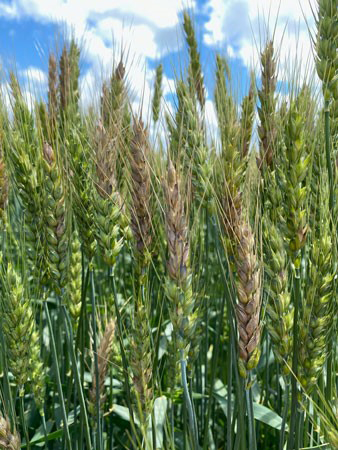
Figure 1. Symptoms of Fusarium head blight (head scab) appear as bleached spikelets anywhere on the head and will spread through the head when conditions are favorable. When there is high humidity, orange-colored fungal structures can be seen in some infected heads. Photo by Kelsey Andersen Onofre, K-State Research and Extension.
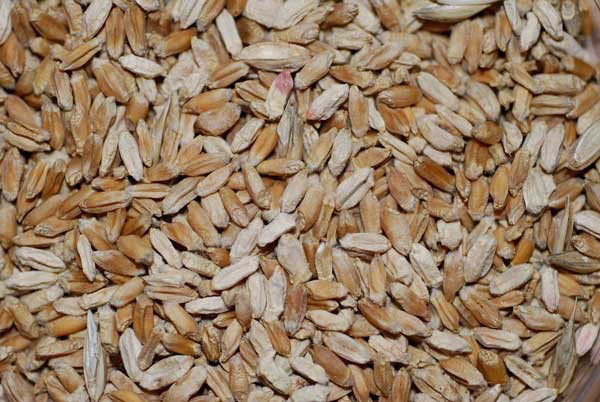
Figure 2. Chalky wheat kernels resulting from a severe infection of Fusarium head blight. Photo by Erick DeWolf, K-State Research and Extension.
Common bunt (stinking smut)
Common bunt is typically only detected at harvest when grain appears to have a black, dusty appearance. Grain may also have a foul, “fishlike” odor. Infection actually occurs in the fall, when wheat seeds infested with spores germinate however, symptoms are not present until grain fill. Kernels infected by common bunt are dark and discolored and are filled with black spores called teliospores (Figure 3). Teliospores can be released when wheat is harvested and in severe cases may cause a black cloud behind the combine. Heavily infected fields can have reduced grain quality and yield. Very ‘smutty’ grain can be discounted. The best way to manage common bunt is to purchase certified, fungicide-treated seed or to have saved seed commercially cleaned and fungicide treated.
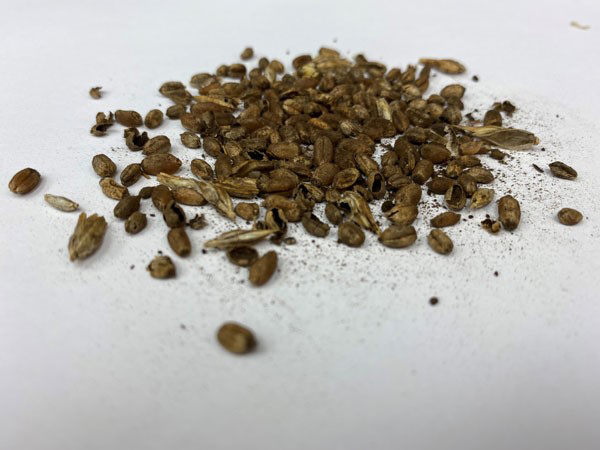
Figure 3. Wheat infected with common bunt. Photo by Kelsey Andersen Onofre, K-State Research and Extension.
Black point and sooty molds
With multiple rain delays slowing the progress of wheat harvest, some areas of the state are reporting sooty molds and grain with a discoloration known as black point. Both of these problems are caused by molds that grow on mature wheat.
These molds are normally not aggressive pathogens in wheat, but they can rapidly colonize mature plants. These diseases are most problematic when rain re-wets mature plants and causes harvest delays. The sooty molds are often a cosmetic problem because the mold growth is very superficial on the chaff and glumes (Figure 4). The sooty molds can make for a dusty harvest, however. If the timing of the rain coincides with the late stages of kernel development, the molds can begin to colonize the outer layers of the wheat kernel, resulting in a gray-black discoloration called black point (Figure 5). Commonly, the embryo end of the kernel is most discolored, but entire kernels can become gray or black as a result of the black point. There is no way to manage this disease as all fungicides are long past labeled application windows. Although not typically yield limiting, the fungi that cause black point can cause problems with germination and may reduce seedling vigor. Seed lots with symptoms of black point should be tested for germination. If black point is causing germination problems, fungicide seed treatments can often improve the germination and ensure good stand establishment.
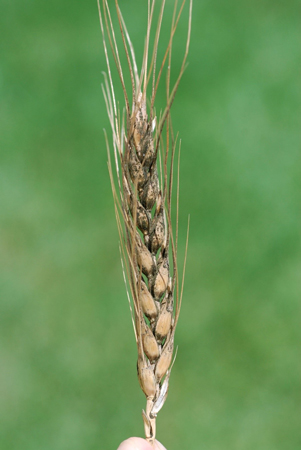
Figure 4. Wheat head with symptoms of sooty mold. Photo by Erick DeWolf, K-State Research and Extension.
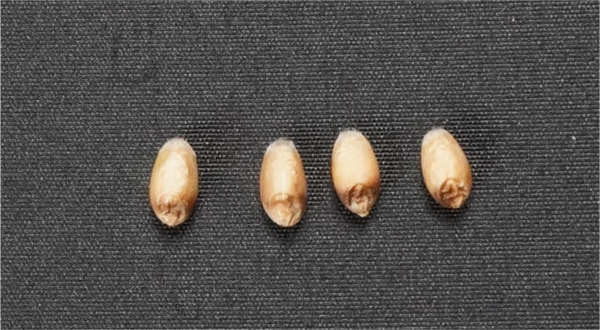
Figure 5. Wheat kernels showing symptoms of black point. In severe cases, the entire kernel may appear darkened. Photo by Kelsey Andersen Onofre, K-State Research and Extension.
Loose smut
Loose smut can be easily identified after heading by masses of black spores that appear on heads in place of spikelets (Figure 6). By harvest, most of the black, powdery spores have been blown away by wind, leaving only the central stem of the head (rachis). Individual heads with loose smut will not produce any grain. Earlier in the growing season, spores from infected heads may have spread to neighboring plants and infect developing seed. Cool, wet weather during the flowering period favors disease spread. Although this disease will not affect grain quality in the current season, the disease can persist within the infected kernels if the grain is saved for seed. The best option for control in infected seed is the use of a fungicide seed treatment. Coverage is key to ensuring the success of the treatment. More information about wheat seed treatment options can be found in this K-State wheat seed treatment publication: https://bookstore.ksre.ksu.edu/pubs/MF2955.pdf.

Figure 6. Loose smut symptoms caused by the fungus Ustilago tritici. Photo by Kelsey Andersen Onofre, K-State Research and Extension.
Kelsey Andersen Onofre, Extension Wheat Pathologist
andersenk@ksu.edu
Tags: wheat disease harvest loose smut fusarium head blight common bunt black point sooty mold